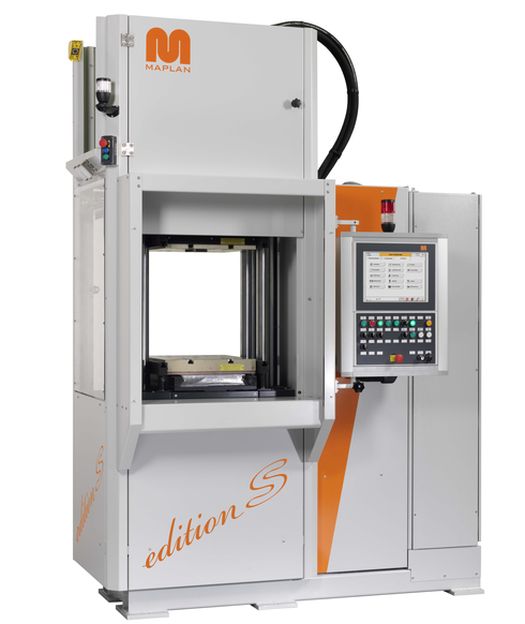Automation of elastomer machines as illustrated by the horizontal 200 to edition.
The exhibit of a MHF400/200edition with a six-axis robot addresses the theme of automation. Rudolf Eisenhuber concedes that generally, six-axis robots are rarely used for the processing of elastomers: “With the further increase in the number of cavities and in complexity, this issue becomes more interesting. In any case, there is great potential in the automation of elastomer processing. For me, this is another contribution to the consolidation of Europe as manufacturing base.”
Like the first exhibit, the MHF400/200edition is also equipped with the latest PC500touch V3 controller with Cure²-interface. It employs a high precision FIFO injection unit that is arranged horizontally, which results in a footprint of 3.6m² without demoulding devices. It produces wristbands out of silicone rubber. The cold-runner tool is provided by RO-RA Aviation Systems from Schörfing am Attersee (A). The tool is equipped with an actively controlled double valve gate cool-runner with two cavities.

A six-axis Fanuc M710iC/50E with removal grippers by RO-RA is employed as extraction robot. The manufacturing cell works fully automated, flash less and requires no rework.
Corner-vulcanisation and -over moulding ‘state-of-the-art’
As third exhibit Maplan shows a MTTF100/40C with C-frame construction. This is a vertical elastomer machine that injects and clamps from top. The tie-bar-less C-frame excels through its strong construction. Maplan C-frame machines offer advantages in ergonomics and handling: they allow the operator free access to the mould mounting area.
Machines of this type are mainly used for corner-vulcanisation, glass overmoulding, sealing elements, moulded parts, end caps and 2k-components. As an alternative to vulcanisation, there is also a TPE version, in the shape of an injection unit for thermoplastic resin, available. This compact system at the DTK 2012 “requires” a footprint of only 1.3m². It is state-of-the-art technology with regards to energy-efficient drive technology (CoolDrive II), as well as to control technology.
However, the highlight is clearly the keyword “corner vulcanisation” and its application. As finished products, the corner jointing of extruded profile result in, for example, window sealings for the car industry or window manufacturers. At the DTK 2012 Maplan produces a door profile. Profile production requires ergonomics, free accessibility and freely configurable additional movements. Again, the Maplan FIFO injection unit with a shot volume of 100ccm sets new standards when it comes to performance and precision.


